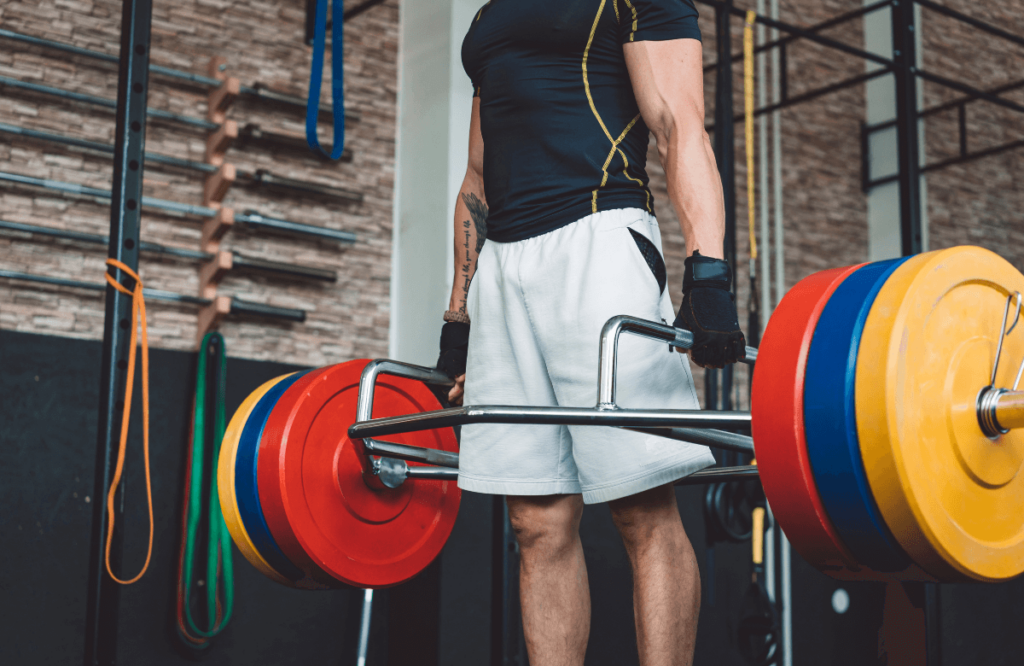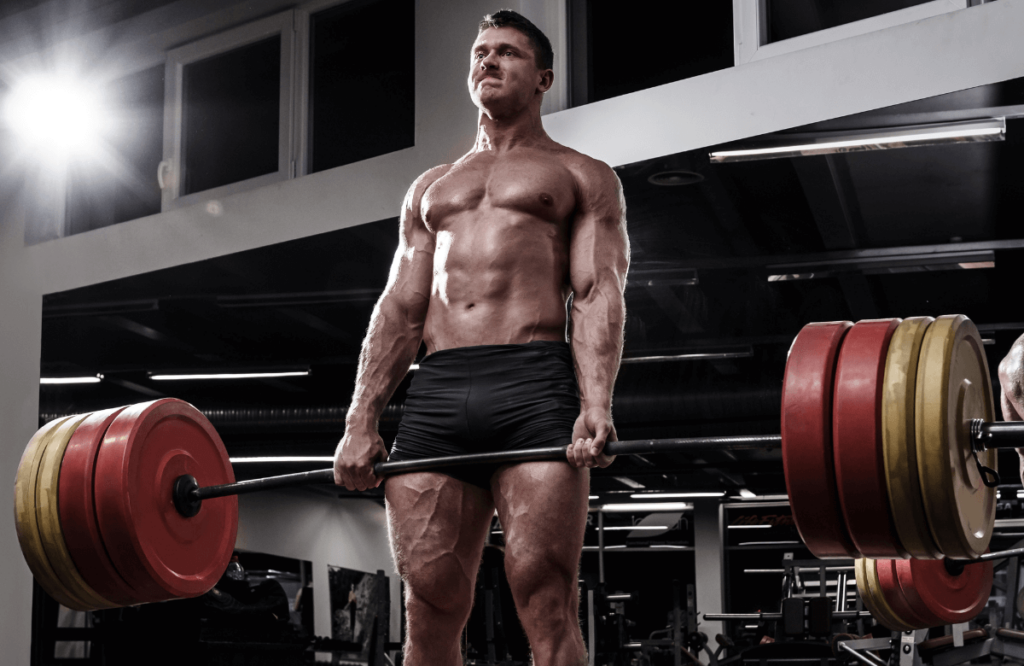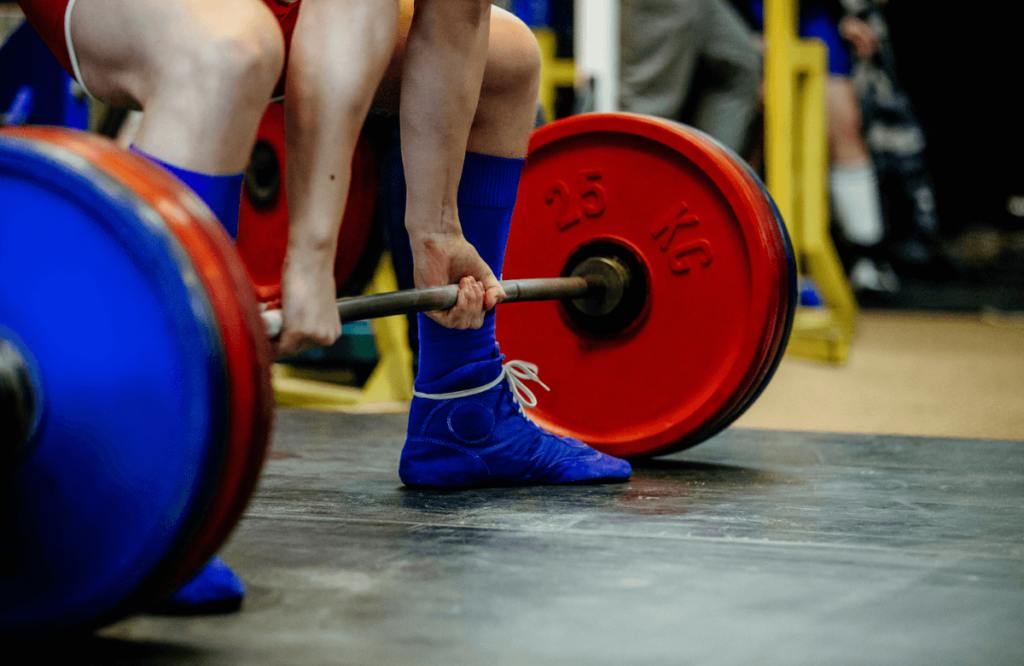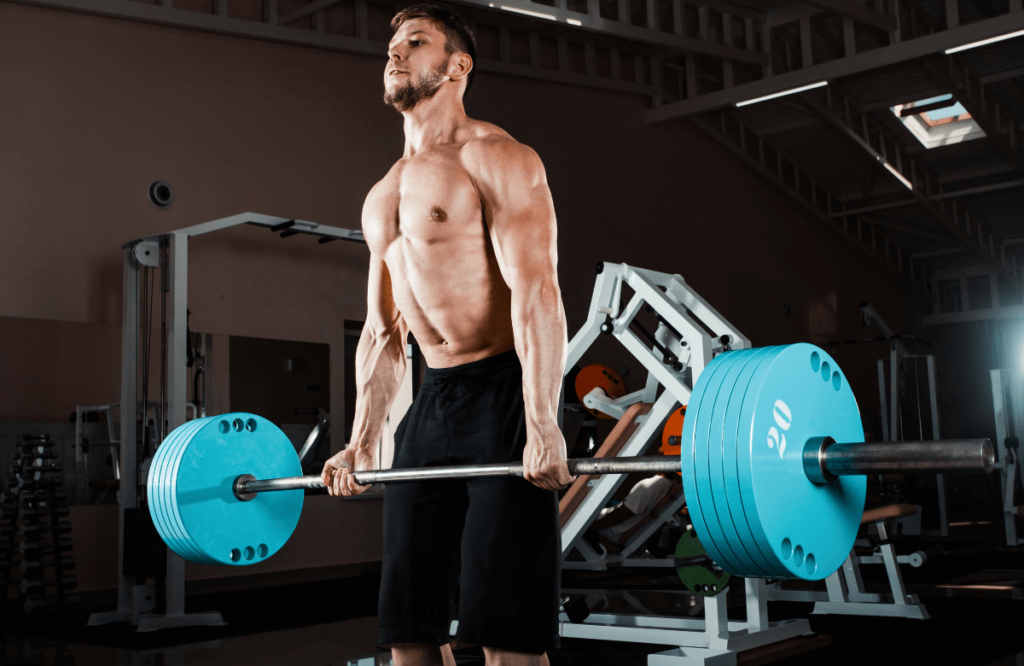At some point, you’ll have to pull heavy weights on your fitness journey. The Romanian and conventional deadlifts are some of the best movements to consider. But RDL vs. Deadlift, which do you choose?
Each option can increase your strength, muscle mass, and power. Let’s examine the differences, advantages, disadvantages, and how to program either option.
The deadlift and Romanian deadlift (RDL) are similar exercises with critical distinctions. The Romanian deadlift is a variation of the conventional deadlift, emphasizing the hamstrings, glutes, and legs. Both pull exercises are fantastic at developing strength but can be better suited for different programs depending on your goals.
- The deadlift starting position is from the ground. The Romanian deadlift starting position is standing.
- The deadlift has an upward motion, while the Romanian deadlift has a downward motion.
- Both movements activate similar muscles, but the deadlift uses more quads. The RDL uses the hamstrings and glutes more.
- Both exercises require hip-hinging, but the RDL uses more hinge and requires you to push the hips away from you as the weight moves down.
- You can use heavier loads on the regular deadlift. The Romanian deadlift variation uses lighter weight.

Jump to:
The Key Differences Between RDL and Deadlift
You’ll need to understand the biggest differences between the deadlift and RDL before deciding which option suits your goals. Although similar, each lift has advantages, disadvantages, and best-use cases. Here are a few points to keep in mind.
Muscle Activation
Both exercises are pulling movements that activate the posterior chain muscles, including the hamstrings, glutes, and lower back.
- The Romanian deadlift engages the hamstrings and glutes more than the classic deadlift, making it more of an isolation exercise.
- The conventional deadlift activates the quads much more than the RDL. This is because the barbell deadlift starts from the floor with the knees bent.
- Both exercises are compound lifts that activate several muscles in the lower and upper body.
Movement and Technique
The Romanian deadlift is a variation of the conventional technique and has a different movement pattern.
- The conventional deadlift uses a full range of motion, as the weight starts on the floor and is lifted.
- The Romanian deadlift has a decreased range of motion and starts standing up.
- The traditional deadlift requires you to bend at the knees and hips, requiring more effort in front of the quads.
- The Romanian deadlift requires you to bend primarily at the hips, making it a hip-hinge exercise.
- The barbell deadlift requires you to keep the shoulders slightly in front of the barbell.
- The shoulders in the RDL are much further in front of the bar than the normal deadlift.
Strength Used
The Romanian and conventional deadlifts have differences in strength and maximum load as well.
- The traditional deadlift is better suited for strength gains and developing muscle mass.
- You can lift more weight with the conventional deadlift than with the Romanian variation.
- The RDL is better suited for isolating the hamstrings and glutes instead of building large amounts of muscle mass.
- The Romanian deadlift might be better suited as an accessory or for enhancing the traditional deadlift.

How to Perform a RDL
- First, rest the barbell on the safety rails of a squat rack.
- Step up to the bar and grasp it near your thighs. The level of the safety rails should help you maintain a slight knee bend.
- Inhale, tighten your abdomen, and pull the bar from the rails by extending your knees.
- Take 3-4 steps backward with your feet shoulder-width distance. Keep a slight knee bend.
- Hinge your hips to bring the weight to your knee.
- Keep the barbell on your thighs. Let your shoulders move over the barbell.
- Imagine moving your hips back to feel the tightness in your backside and hamstrings.
- The bar should remain on your thighs while your shoulders travel over the barbell.
- When the barbell is right below your knee, tighten your backside to pull your hips up and forward.
- Keep a slight bend in the knees, even at the top of the lift.
Avoid These Common Mistakes
- Locking your knees at the top: Ensure you keep a slight knee bend throughout the motion. This will allow you to hinge your hips forward without straining the lower back.
- Bending your knees to pull the weight forward: Avoid squatting the weight by excessively bending the knees. Too much bend in the knees will engage the glutes less and may cause strain.
- Going too low: You should stop just below the knee during the Romanian deadlift. This prevents the movement from turning into a conventional deadlift.
- Letting the bar drift: Allowing the bar to drift can make it easier for your back to round. This can be dangerous and cause strain or injuries. Instead, keep the bar on your thighs to engage your hamstrings and glutes.
Romanian Deadlift Benefits
- Extremely effective at isolating the glutes and hamstrings. Best suited for developing lower-body strength.
- You can use a lighter load.
- Increases hip extension strength and mobility.
- It can be used for teaching the hip hinge technique.
- It translates well to sports and athletics, including running, cycling, hiking, and more.
- Reduces the risk of hamstring injuries by increasing strength and stability.

How to Do a Standard Deadlift
- Step up to the weight and stop when your midfoot is directly underneath the bar. Keep your feet shoulder-width apart or just inside shoulder-width.
- Grip the barbell with your hands just outside the shins.
- Take a deep inhale and hold it. Tighten your core.
- Lower your hips to the starting stance with your shoulders slightly in front of the barbell.
- Keep your back straight and engage the lats by tightening your armpits.
- Now, push up from the floor with your knees. Ensure your hips don’t rise faster than the weight.
- When the weight is at your knees, imagine moving your hips forward. Lock your hips and knees simultaneously.
Avoid These Mistakes
- Rounding the back: Rounding in the back can happen with incorrect technique and heavy weights. Instead, engage your core and keep your chest up. Maintain a neutral to stiff spine.
- The barbell is too far away: You’ll use more energy and activate fewer muscles if the barbell is too far from your body. Instead, keep the barbell on your body and engage the lats to keep it close.
- Losing grip: Losing grip strength is a common issue during the traditional barbell deadlift. It may be caused by too much weight, a weak grip, or sweaty palms. You may need to adjust your grip technique or use accessories like wrist straps, chalk, or weightlifting hooks.
Benefits of Deadlifts
- Builds muscle mass and brute strength in the hips, thighs, and back.
- Increases functional strength and makes it easier to perform daily tasks like bending over to pick something up.
- It can improve mind-muscle connection, stability, and balance.
- Increases bone density which may prevent injury.
- Decreases the risk of ankle, knee, and leg injury.
- Fantastic rehabilitation exercise.

Which Movement Should You Program?
Now that you know the differences between the two lifts, which option should you add to your workout routine? The proper exercise depends on your fitness goals, level, and circumstances. Let’s look at some general suggestions that can help you decide between the Romanian and conventional deadlift.
For Beginners
Beginner lifters might want to start with the Romanian deadlift, as it has a reduced range of motion and can help you perfect the hip hinge technique. That said, it won’t be as helpful for putting on muscle mass and strength.
For Building Strength
If you want to build maximum strength, opt for the traditional barbell deadlift. The conventional deadlift engages several muscles in the lower and upper body. Maxing out your pulls on the deadlift can help you develop serious levels of strength both inside and outside the gym.
The Romanian variation can be excellent as an accessory or support but won’t help you build as much strength as the conventional deadlift. Instead, you might want your strength training program to consist of major barbell lifts, like the deadlift, squat, and bench press.
For Muscle Isolation
The traditional barbell deadlift can help you build muscle mass, but the RDL is excellent for hypertrophy training. The Romanian deadlift is better suited for isolating the hamstrings, while the deadlift can help you target the glutes and low back. You can use submaximal loads with the Romanian deadlift and still see substantial returns.
This type of deadlift variation can also be helpful for aesthetic goals, as more rep ranges can help you increase muscle size.
For Powerlifters
Powerlifters and competitive lifters know that the deadlift is the gold standing for building strength. The standard deadlift is an effective exercise that allows you to use heavier weights. Prioritize the deadlift if you compete in CrossFit, powerlifting, Olympic, strongman, or other competitive events.
You can still incorporate the Romanian variation, but it will be better suited as an accessory lift to improve your overall strength, force, and explosive power.
Variations to Consider
You can consider a few common deadlift variations to isolate specific muscles. Here are a few variations to include in your deadlift routine:
- Single-leg Romanian Deadlift
- Stiff-Leg Deadlift
- Deficit Deadlift
- Hex Bar Deadlift
- Rack Pulls
- Sumo Deadlift
As you can see, a wide range of deadlift substitutions can target different muscles across the entire body. For example, stiff-legged deadlifts can be excellent at hitting the glutes and hamstrings. Movements like the single-leg Romanian deadlift can isolate your muscles even further.

Frequently Asked Questions (FAQ)
Is the RDL Better Than the Normal Deadlift?
The normal deadlift activates more muscles, including the quads, glutes, hamstrings, abs, and more. This makes the deadlift better at building overall strength and muscle mass. The RDL engages the hamstrings more, making it a better isolation exercise.
Can I Go Heavy With RDLs?
Most lifters use less weight on the Romanian deadlift than the standard deadlift. It can be better suited for hypertrophy training and developing the hamstrings. You might use 30-40% of your 1 rep max deadlift for 8-10 reps during the RDL.















